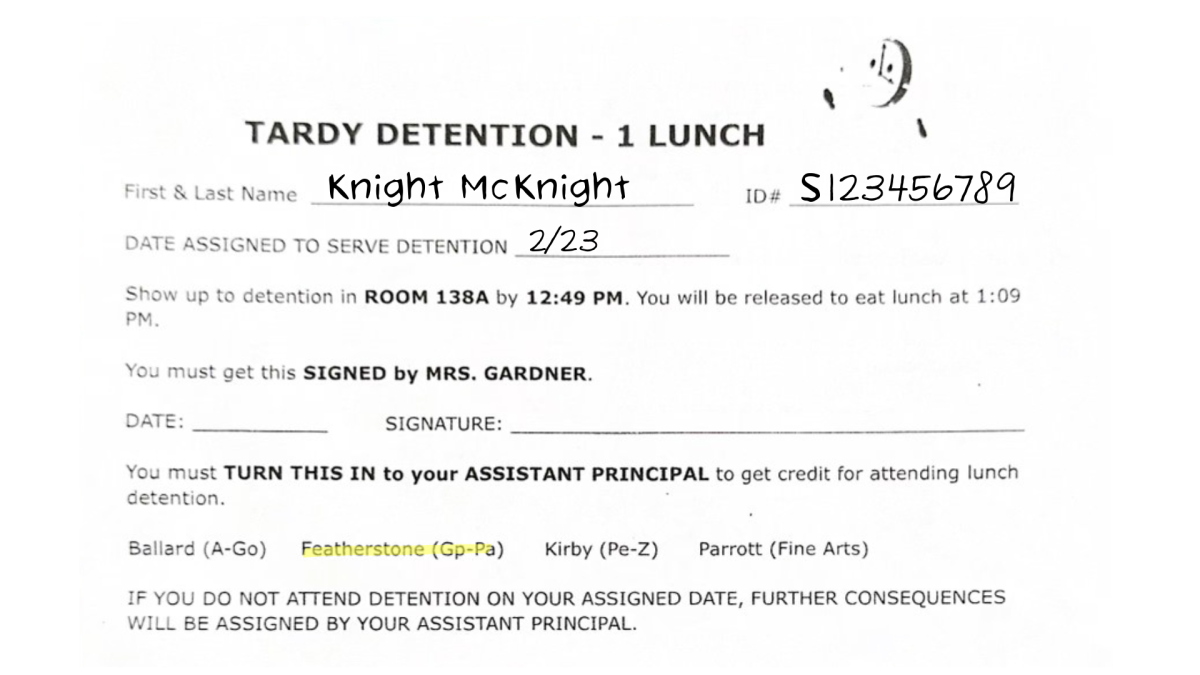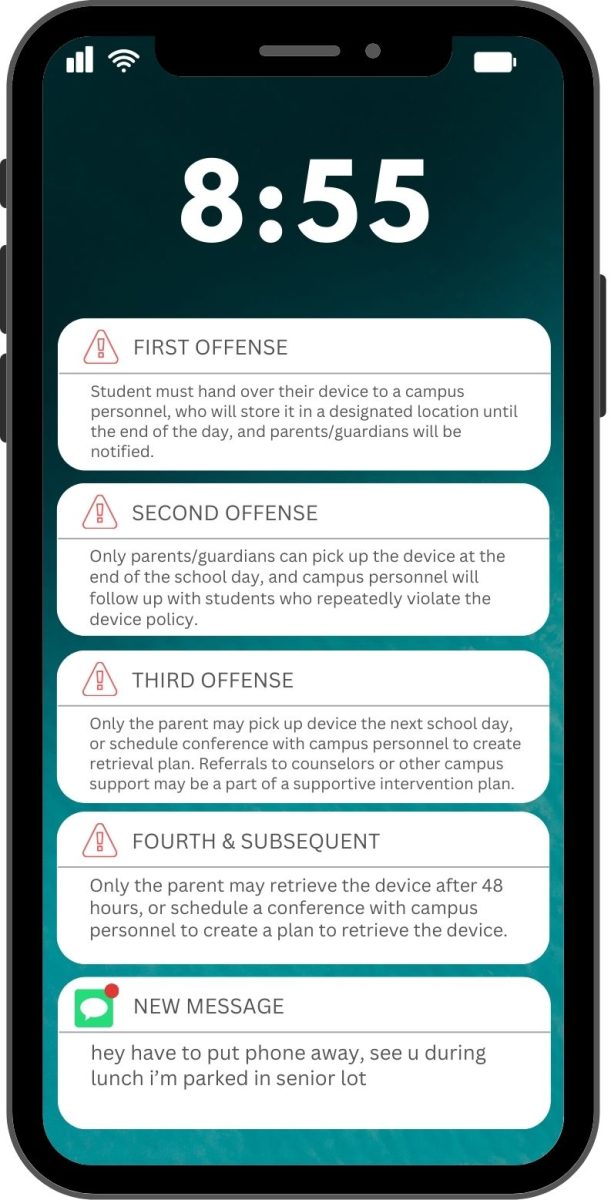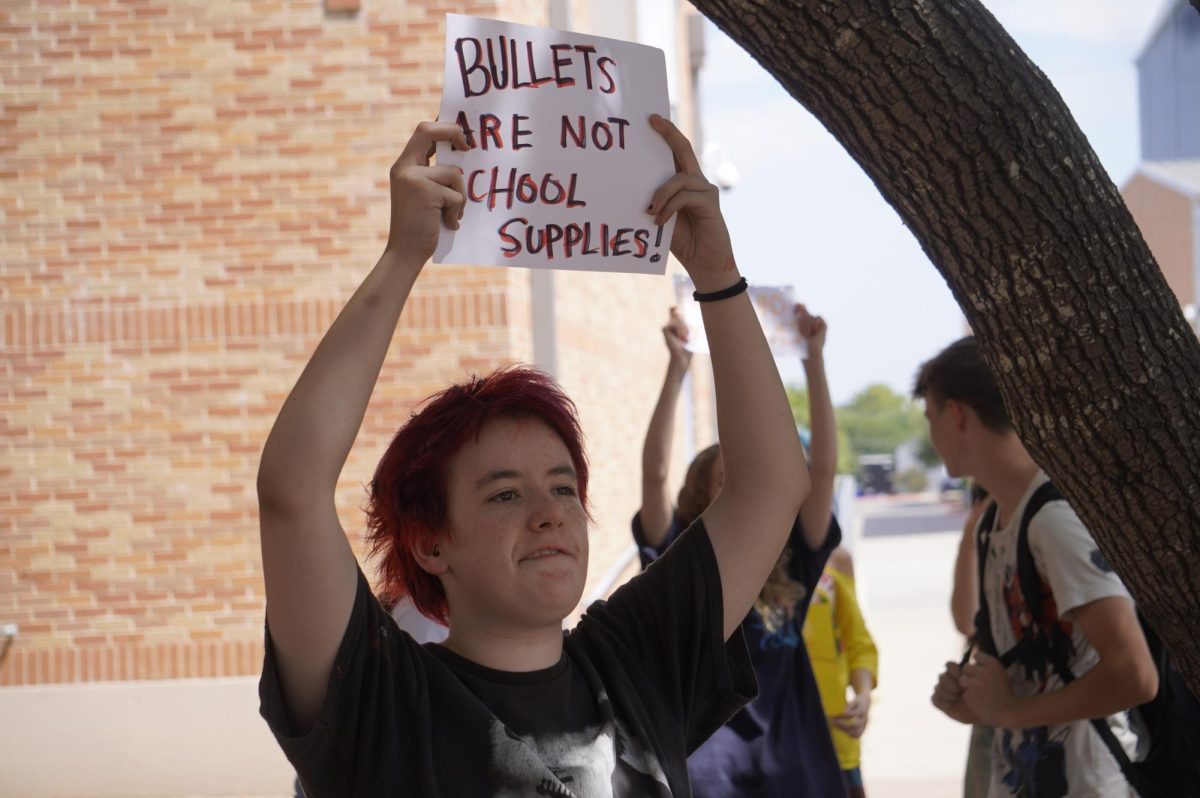Students with more than two tardies in one week face lunch detention as a result of a new tardy policy implemented on Feb. 12. The administration enacted the policy to encourage punctuality to classes after noticing an increase in tardies this school year.
The policy states that administration will be “monitoring attendance very closely” in order to ensure punctuality. Students have the six-minute passing period to get to class, and may get up to two tardies per week “without penalty.” If students receives a third tardy, their name will appear on their “administrator’s discipline list.”
If a student continues to appear on the discipline list, the consequences increase after the first appearance on the list. A third appearance on the list results in one week of lunch detention and a parent notification. A fourth appearance brings with it one full day of in-school suspension and a parent meeting.
“The halls after the bell rang were insane two to five minutes afterwards,” Principal Andy Baxa said. “Now it’s a little bit bad a minute after bell, but two minutes after, most kids are in class.”
According to a weekend update email from Baxa on Feb. 18, a week after the policy’s implementation, less than 5% of the student body had more than two tardies, “reflecting a positive shift in punctuality,” and 64% did not receive any tardies.
“I mean just look at the halls,” Baxa said. “They look clearer than they did a couple weeks ago.”
Assistant principal Teri Kirby said that there were 107 fewer tardies during the week of March 1 compared to the week of Feb. 23.
Baxa says this is not the first time this policy has been in force. The administration last implemented the policy during the 2021-22 school year. According to Baxa, the policy was discontinued to decrease the workload on the administration after the admin team was reduced from five to four administrators.

“We saw improvements in tardies [in 2021-22] and work increase for AP’s so their attention shifted somewhere else,” Baxa said. “After ‘21-22 we went from a five-man team to a four-man team of AP’s and so that shifted a lot of the responsibilities around the team and increased the workload for every AP in the team, so we had to take something off their plate at that time.”
Though deemed effective by administrators, many students have criticized the policy.
“I think [the tardy policy] is ill-advised to say the least because I know that people will start skipping classes they are tardy to [in order] to avoid a week of lunch detention,” senior Carys Blaney said. “If I am late for class, and I know I’m going to get a tardy, I myself am going to skip because they aren’t going to do anything about that absence, but they will put me in lunch detention otherwise.”
Blaney received a lunch detention on Feb. 23.
“I honestly have no idea what I was tardy to,” Blaney said. “It has thrown me off because for me it’s like they suddenly care about something that has always been relaxed and not too big a deal. I’m getting punished for something I didn’t even know I was doing poorly on.”
Lunch detention takes place in Room 138, Deborah Gardner’s classroom. The policy has led to more students arriving to her classroom during lunch. Gardner believes the policy will become effective.
“I agree with the tardy policy because I feel that the administration is trying to do something to instill in the students’ heads that they are here for learning: something that will benefit them,” Gardner said. “They cannot get that by not going to class. You need to be in class in order to get whatever we have to offer as far as education goes.”
Baxa says that the first attempt to address chronic tardiness was from the ground up, but that the administration has since resorted to a top-down approach due to lack of improvement.
“[The initial idea was] supporting individual teacher’s classroom policies in relation to tardies,” Baxa said. “It just wasn’t working. We needed something more top-down rather than bottom-up.”
Though students have criticized the policy as strict, Baxa added that assistant principals are willing to work with students who have extenuating circumstances that lead to tardies.
“There are always going to be mitigating factors to consider,” Baxa said. “That’s why [on the first day of policy implementation] we had about 91 people on the list and only 50 or so show up to ISS. We do take mitigating factors into consideration, but the students have to be able to show us proof because we are going to follow up on that.”









Harper • Apr 6, 2024 at 4:17 pm
I think this is a very well written article and it includes lots of useful information in it. All of the statistics and small details really put into picture the impact this new system has on our school. I especially liked that the writer gathered interviews from many different perspectives to counter opinions. Some of the adults on campus think it is helpful for the school while some of the students have a different opinion, the story does a great job of explaining each side without adding any bias to it.
Poppy • Apr 3, 2024 at 9:21 pm
I liked reading the student’s sides of this story because it gives teachers a different perspective than just assuming kids are late because they were “distracted” or “talking to friends”. There are endless possibilities of why a kid might be late and it’s wrong to punish students for something that might not be their fault. This story is very well written and I enjoyed reading it.
fletcher • Apr 1, 2024 at 9:00 pm
Your article represents most students’ feelings and how a non-existent problem has become punishable.
Katie Martin • Apr 1, 2024 at 2:02 pm
I really like this article because I think that you showcased both sides of the argument well. I can see both sides on this topic, but for the most part, I agree with it because it has helped students get to class on time more. I also like that the administration is offering to not enforce this on students with extenuating circumstances. You did a great job adding quotes from students and teachers; the article is very well-written.
EZ • Mar 28, 2024 at 3:45 pm
Great article, it sucks that the administration keeps doing stuff like this. Can’t the rules not change for 5 Damnation cursed minutes?